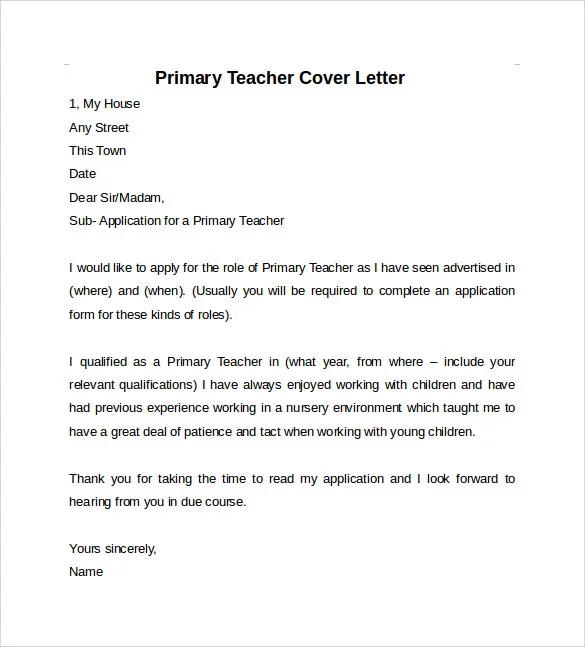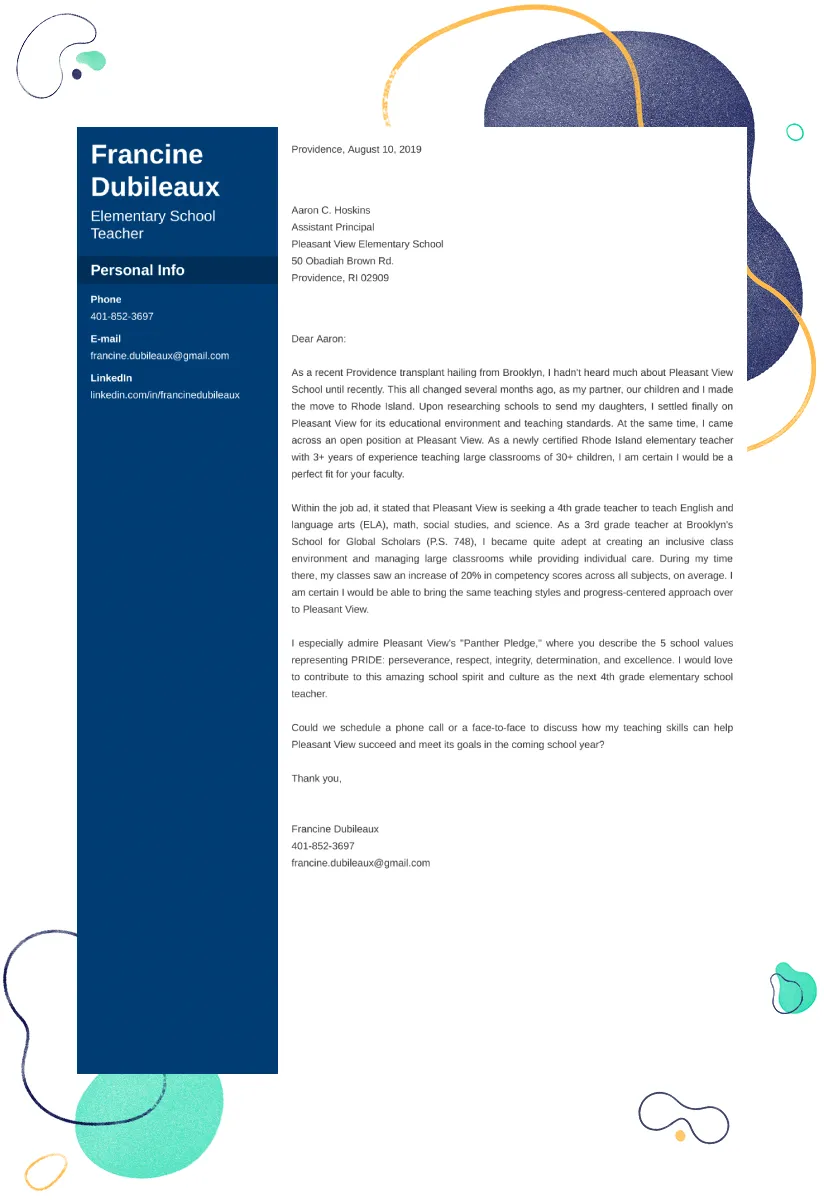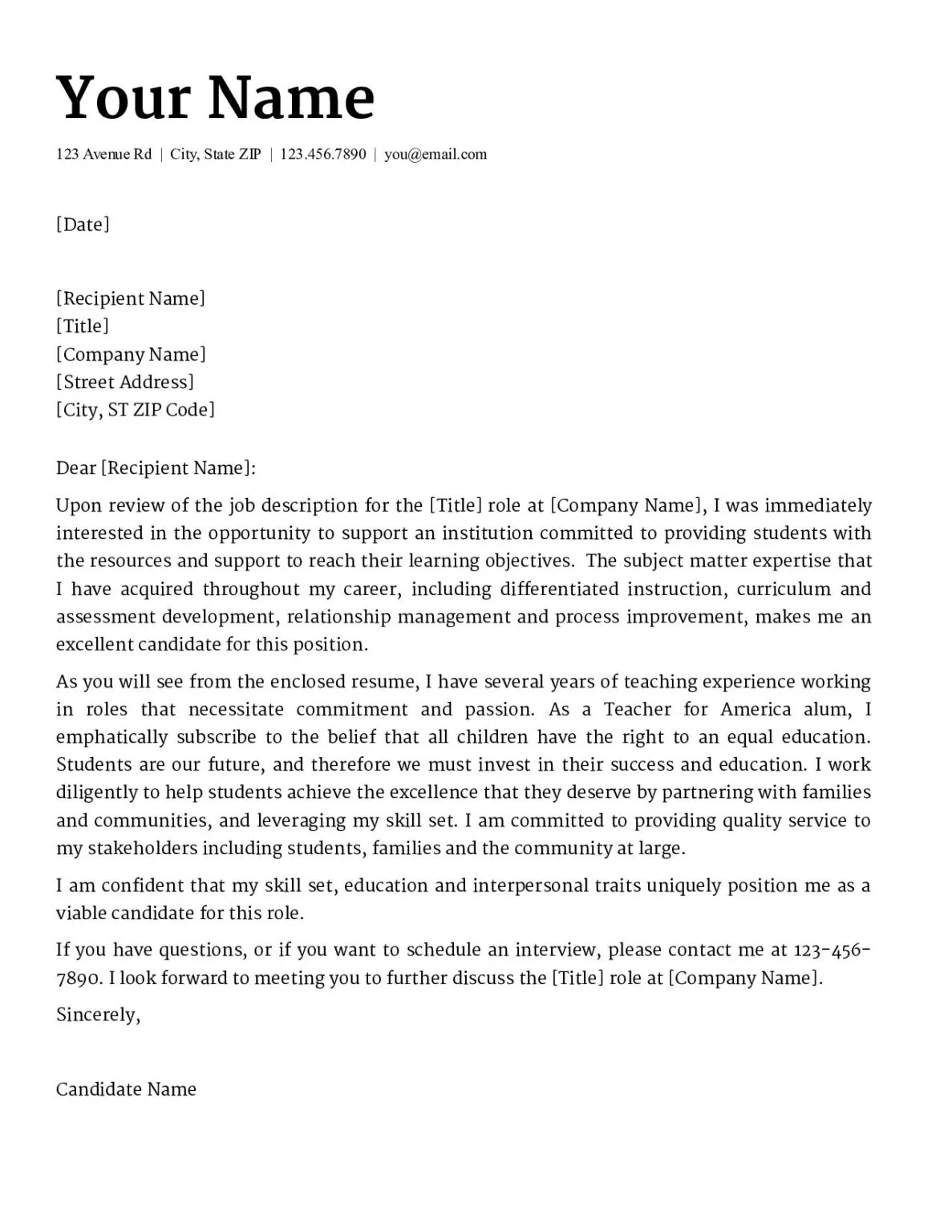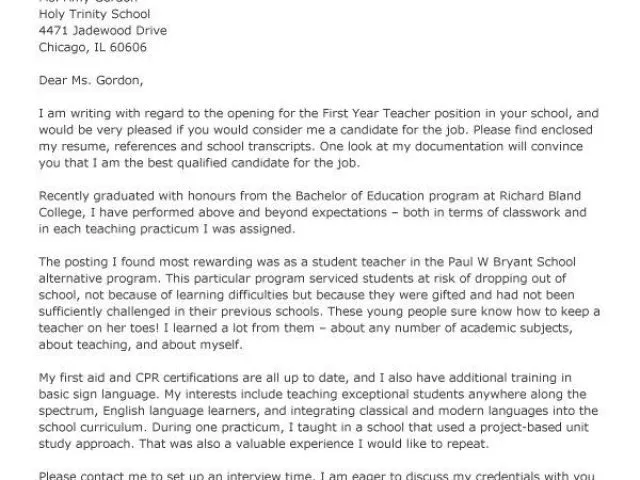Crafting Your First Year Teacher Cover Letter
As a first-year teacher, your cover letter is your first impression. It’s your chance to showcase your enthusiasm, skills, and potential to a hiring committee. Unlike experienced educators, you may lack extensive work history. Therefore, it is crucial that your cover letter highlights your strengths and demonstrates your readiness to contribute to their school environment. A well-crafted cover letter can significantly increase your chances of landing an interview. This guide provides practical tips and tricks to help you create a compelling cover letter that sets you apart from other applicants and gets you noticed. Remember, this letter is your story; make it a story they want to read.
Highlighting Your Strengths
While experience might be limited, every aspiring teacher brings unique strengths. These could be leadership qualities gained in college, volunteer work with children, or exceptional communication skills. Your cover letter should emphasize these assets. Think about the skills that make you a great teacher; organization, patience, and a positive attitude. Think about how you would describe yourself. Make sure the letter sounds genuine and true to who you are.
Showcasing Relevant Skills

Detail specific skills that align with the job description. If the position calls for a teacher skilled in differentiated instruction, give examples of how you have successfully implemented these strategies. Even if you don’t have a full year of experience in the classroom, you can demonstrate your ability to apply these skills through student teaching experiences, tutoring, or volunteer work. Frame these experiences in terms of positive results you achieved.
Emphasizing Your Education and Certifications
Clearly state your educational background and any relevant certifications. Mention your degree, the university you attended, and any honors or specializations. If you have a teaching license or are in the process of obtaining one, make sure this information is prominent. Highlight any specialized training you may have, such as certifications in special education or bilingual education. Education is an important part of the application process, this helps ensure your application is taken seriously.
Demonstrating Classroom Management Abilities
Classroom management is critical to a teacher’s success. Your cover letter should include evidence of your ability to create a positive and productive learning environment. Mention specific techniques you’ve used, such as establishing clear expectations, using positive reinforcement, and implementing structured routines. Show how you have dealt with behavior challenges. Any experience in this area, even if it is in a volunteer setting, is valuable to include.
Providing Examples of Lesson Planning

Provide concise examples of your lesson planning skills. Briefly describe a lesson you designed, including the learning objectives, the activities you used, and the assessments you implemented. Emphasize how your lessons are engaging, differentiated, and aligned with curriculum standards. Mention the use of technology or any other innovative methods in your lessons. Be specific, and make sure to align these examples with the school’s curriculum.
Mentioning Experience with Specific Teaching Methods
Schools often look for teachers proficient in specific teaching methods. If you have experience with project-based learning, cooperative learning, or any other particular approaches, be sure to mention it in your cover letter. Provide examples of how you have successfully integrated these methods into your teaching practice. Quantify your results whenever possible, such as ‘increased student engagement by 20% through the use of group projects’.
Showcasing your understanding of curriculum
Demonstrate that you understand the curriculum and can teach a subject. Explain how your methods of teaching will ensure that students learn and meet all requirements. Include any programs, systems or skills you understand and how you would use them.
Emphasizing Your Passion for Teaching

Let your passion for teaching shine through. Share why you chose this profession and what inspires you. Use specific anecdotes to illustrate your commitment to student success. Describe what makes you excited to teach, and mention any specific subjects or age groups you are particularly passionate about. This enthusiasm can make a lasting impression on the hiring committee. If you’re passionate about education, demonstrate it!
Tailoring Your Cover Letter to the School
Generic cover letters are easily identified and often discarded. Tailor each cover letter to the specific school and position. Demonstrate that you have researched the school and understand their values and needs. This shows you are serious about the opportunity. Do not waste a single letter by sending out generic information. Do the research, and the time invested will pay off. Show that you care about the school, and make sure to highlight the positive aspect of the school!
Researching the School’s Mission and Values
Visit the school’s website and review their mission statement, values, and any special programs they offer. Show how your values align with the school’s. Mention the school’s achievements and how you can contribute to their success. This shows you are not only interested in a job but also in becoming a part of the school’s community and mission. Identify something that excites you about the school.
Addressing the Specific Needs of the Position

Carefully read the job description and identify the specific requirements. Highlight how your skills and experiences meet those needs. If the position calls for a teacher with experience in a specific subject or with a particular student population, make sure to address that. Show how you are the right fit for the job. Show that you understand the requirements and how you can fill them. Be specific; this is the time to sell your skills.
Proofreading and Formatting Your Cover Letter
A well-formatted and error-free cover letter is essential. Poor grammar, typos, and formatting errors can quickly disqualify your application. Always proofread your letter carefully. Ask a friend, mentor, or career counselor to review it before you submit it. A clean, professional format is critical, and the easier your cover letter is to read, the better.
Ensuring Proper Grammar and Spelling
Use a grammar checker and spell-checker. But don’t rely solely on these tools. Read your cover letter aloud to catch any awkward phrasing or mistakes. Pay close attention to punctuation, subject-verb agreement, and sentence structure. A polished letter shows attention to detail, which is a crucial attribute for teachers. Ensure that the reader understands everything you are communicating. It should be perfectly accurate.
Using a Professional and Readable Format

Use a standard font like Times New Roman or Arial. Use clear headings and subheadings to break up the text and make it easy to read. Keep your paragraphs concise and avoid long blocks of text. Ensure your formatting is consistent throughout the document. A well-organized cover letter looks professional and helps the reader quickly grasp the key points. Simple is better. Never submit a cover letter with inconsistent formatting.
Following Up After Submission
After submitting your cover letter and resume, follow up with the school. Send a brief email or make a phone call to confirm they received your application and to reiterate your interest. This shows initiative and demonstrates your enthusiasm. However, avoid being overly persistent. A polite and professional follow-up within a reasonable timeframe (e.g., a week or two) is appropriate. Always thank them for their time and consideration.
